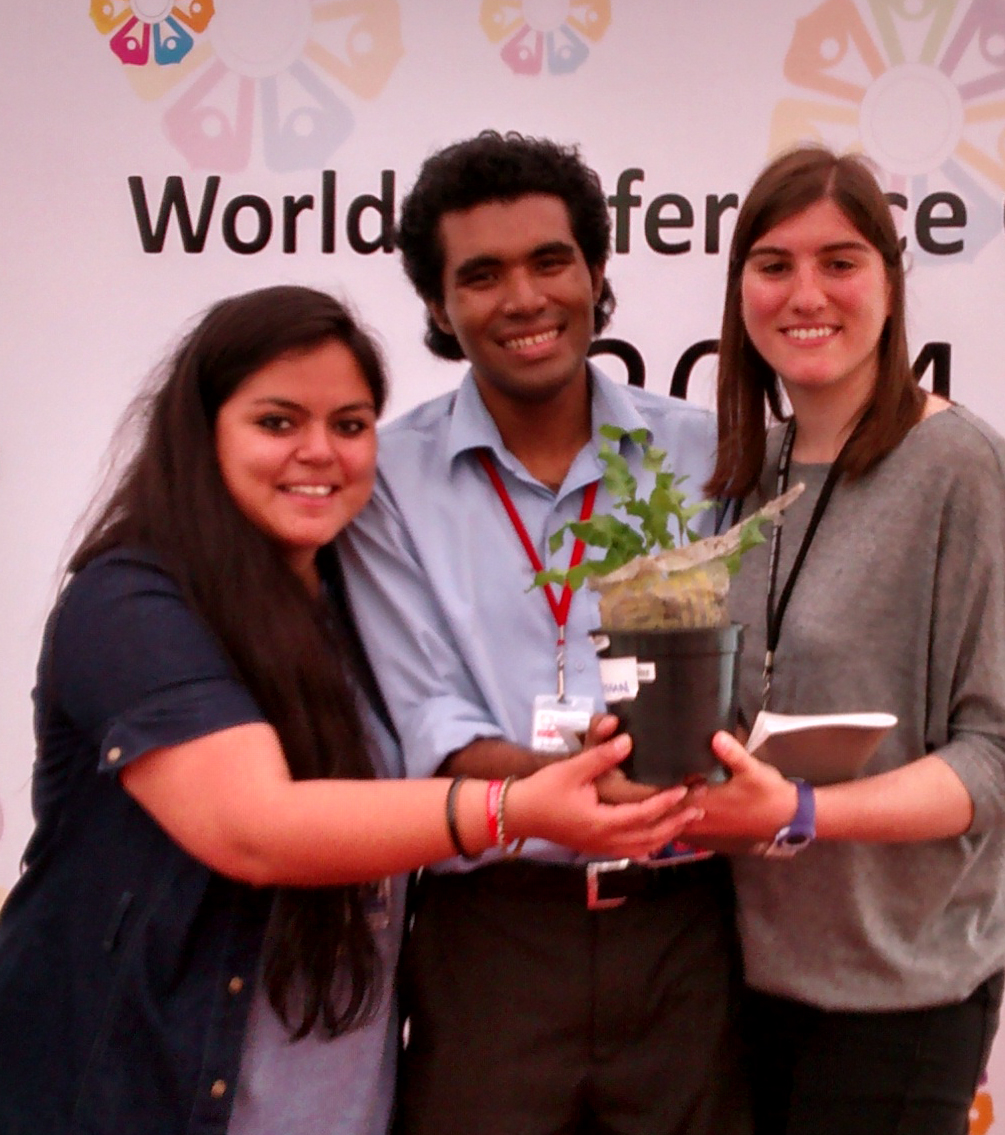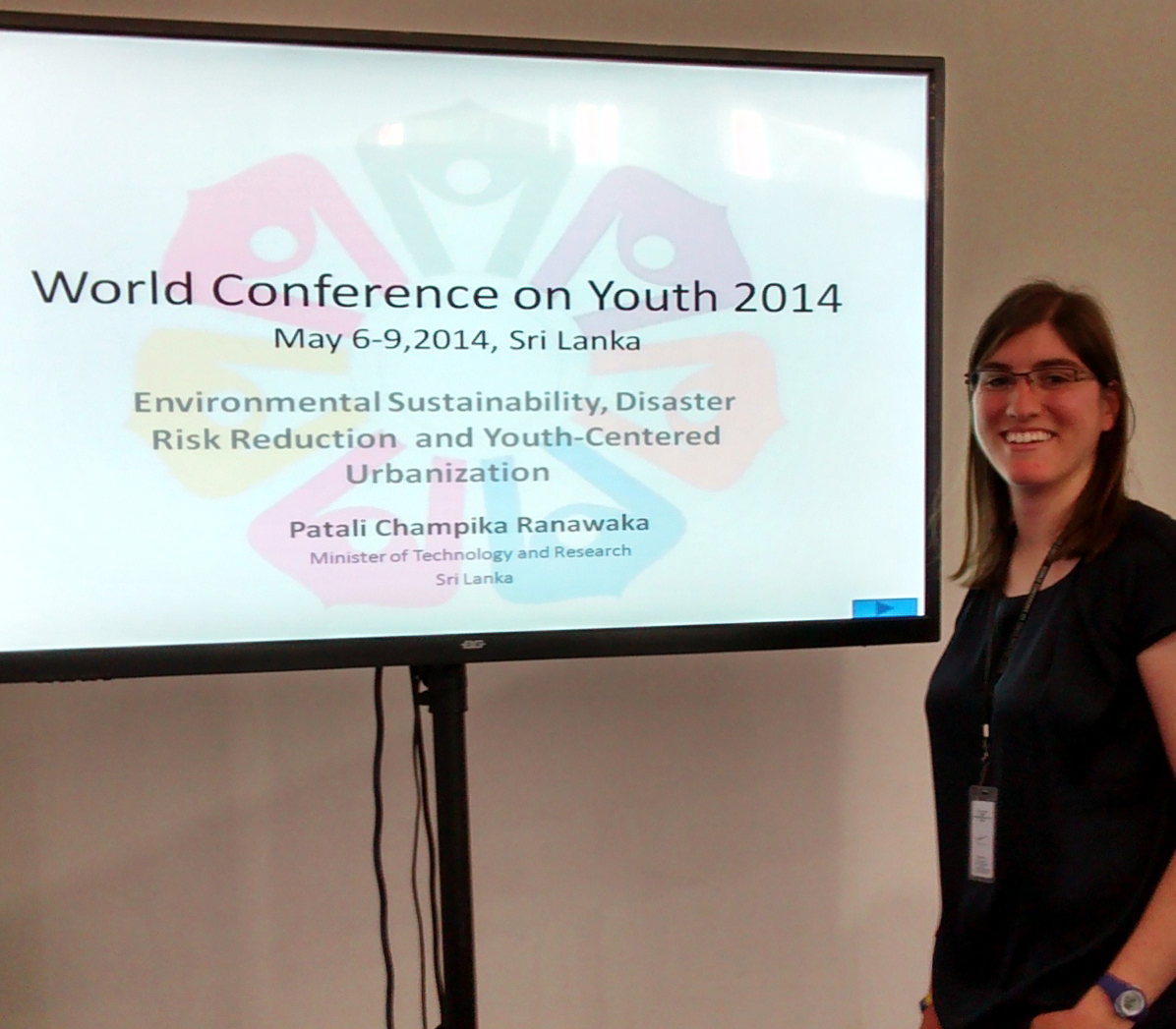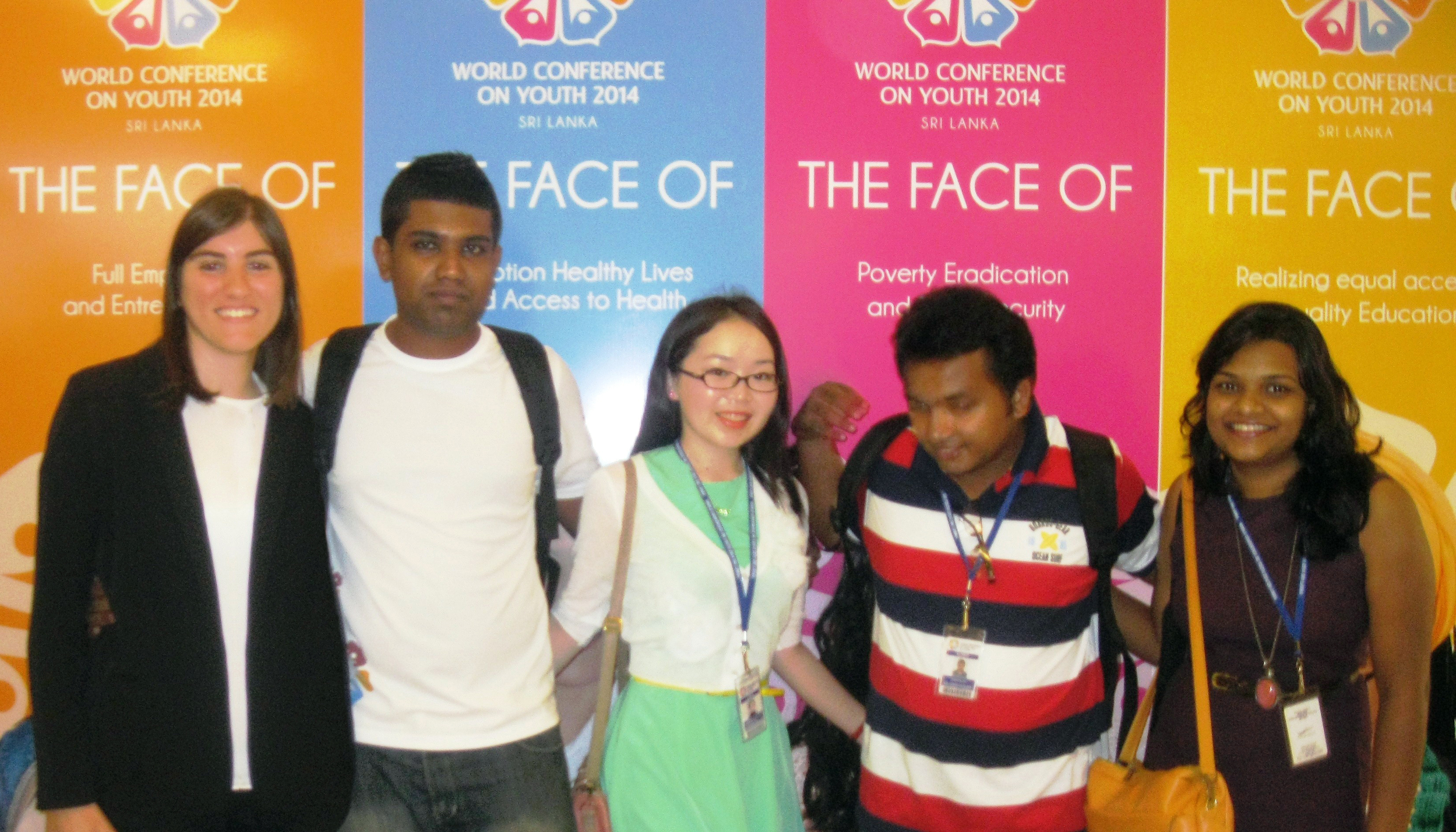Currently, there are over 1.2 billion young people in the world – the largest generation of youth ever seen. In his opening message, United Nations Secretary-General Ban Ki-moon indicated that this is a “time of both unprecedented opportunity and uncertainty, with high unemployment, changing workplaces, and evolving social, political and economic challenges.” He noted that expectations are “rightly high”, and they can only be met by working together for broadly shared prosperity and a life of dignity for all. He encouraged participants to continue to raise their voices loud and clear so that they are heard not just at the conference, but in their communities around the world.
Between 5th-10th May 2014, one of the biggest youth conferences in the world brought together young people from over 170 countries taking place at the foot of the Indian Ocean in the Wonder of Asia: Sri Lanka. The event carried the tagline of “Mainstreaming Youth in the Post-2015 Development Agenda” and served as one of the principal methods of hearing young people’s voices in the next development agenda moving beyond Millennium Development Goals (MDG) which are expiring next year. Ministers of Youth from around the world, high-level officials from the United Nations and other civil society organizations, and the private and the academic sector joined young people in Colombo, the capital of Sri Lanka, to discuss and adopt the Colombo Declaration on Youth, which was the outcome document of the World Conference on Youth 2014 (WCY 2014)
During the one week conference, youth delegates discussed how the world’s inequalities could be reduced in relation to seven key foundations and seven thematic areas. The foundations were broad, cross-cutting issues, while the thematic areas were more specific. On the one hand, the main foundations of the conference were: achieving good governance and accountability, inclusive youth participation at all levels, youth rights, globalization/inclusive youth-led development, ending systematic inequalities, gender equality, and empowering marginalized youth including most at risk young people. On the other hand, the thematic areas were: realizing equal access to quality education, full employment and entrepreneurship, poverty eradication and food security, promoting healthy lives and access to health, environmental protection, emergency preparedness and youth centered urbanization, realizing peace, reconciliation and ending violence, and ensuring inclusive recreation, sports and cultures.
 AEGEE was present in the WCY 2014 with the participation of our Liaison Officer towards the European Youth Forum, Marko Grdosic (as International Youth Delegate on behalf of AEGEE) and me, as Liaison Officer towards the United Nations, but also as National Youth Delegate on behalf of the Spanish Youth Council – CJE, who had the chance to review the progress of the MDG’s, share ideas, experiences and innovative approaches for effectively contributing to the post MDG framework and its implementation, considering that this conference was the final push to mainstream youth in the Post 2015 Development Agenda before Member States of the United Nations meet at the General Assembly in September 2014.
AEGEE was present in the WCY 2014 with the participation of our Liaison Officer towards the European Youth Forum, Marko Grdosic (as International Youth Delegate on behalf of AEGEE) and me, as Liaison Officer towards the United Nations, but also as National Youth Delegate on behalf of the Spanish Youth Council – CJE, who had the chance to review the progress of the MDG’s, share ideas, experiences and innovative approaches for effectively contributing to the post MDG framework and its implementation, considering that this conference was the final push to mainstream youth in the Post 2015 Development Agenda before Member States of the United Nations meet at the General Assembly in September 2014.
Youth considered as equal stakeholders
WCY 2014 was unique with regard to the degree of youth influence over official negotiations. Rather than youth meetings in advance of negotiations and producing separate outcome documents, this conference produced a “joint declaration” endorsed by both youth and governments. For all that, it can be said that this was the first time that youth representatives were included as equal stakeholders in this United Nations negotiations procedure expressed in the Colombo Declaration on Youth.
As a result, the declaration has strong language on youth engagement: for example it calls for the establishment of a permanent youth department within the United Nations with representations in member countries to support and follow up local youth programs and also calls on the Secretary-General of the United Nations to establish a permanent forum on youth, for youth and governments to facilitate a sustained dialogue including on the Post- 2015 Development Agenda.
Now UN must ensure that young people’s voices are not a mere paper archived at the UN headquarters, but that these recommendations are fully endorsed by all UN system bodies, world governments and reflected in the final outcome decisions regarding the new Millennium Development Goals. Of course, it is our responsibility and right to keep pushing our policymakers and to hold them accountable to their word. In any case, whether the Colombo Declaration on Youth is taken forward or not (the impact will take years to realize), it is clear that the delegates returned to their homes and continued the real impact-full work they do with stronger networks all around the world.
In conclusion, the Colombo Declaration on Youth was a success in the sense that the youth did have a say and was invited to the negotiation table. However, this declaration does not entirely reflect the youth’s concerns and views. Only thirty governments took part in the negotiations out of which none was from Europe, which also raises questions about the representativeness of the declaration. Therefore, the participants also worked together on an Annex to the declaration (a compilation of all input from the conference roundtables and pre-conference consultations) that better reflects the aspirations of today’s youth for the next fifteen years.
Written by Laia Garcia Montufo, Liaison Officer towards the United Nations



